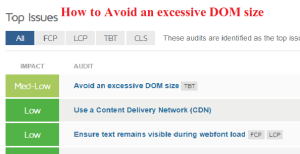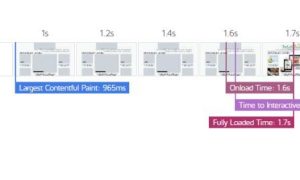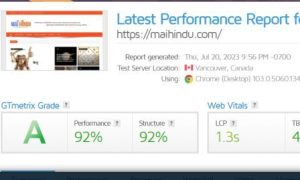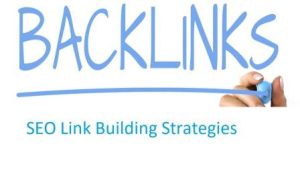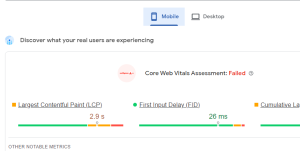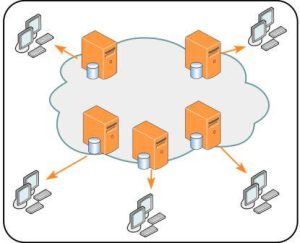
Top 10 Free Do-Follow Backlink Providers: Boost Your SEO Efforts
Top 10 Free Do-Follow Backlink Providers: Boost Your SEO Efforts In this post, we will explore the top 10 free Do-Follow backlink providers that can help you enhance your website’s SEO performance. In the ever-evolving world of search engine optimization (SEO), backlinks continue to be a critical factor in determining a website’s ranking on search engine results pages (SERPs). Do-Follow backlinks, in particular, hold immense value, as they pass on “link juice” and contribute significantly to your website’s authority and trustworthiness in the eyes of search engines like Google. While acquiring high-quality backlinks is crucial for SEO success, finding reliable sources for free Do-Follow backlinks can be challenging. image source : https://www.picpedia.org/ as per some users reveiws & online reports these are Top 10 Free Do-Follow Backlink Providers Quora Quora is a popular question-and-answer platform with a vast user base. By actively participating in discussions relevant to your niche, you can establish yourself as an authority in your field. Additionally, you can include links to your website in your responses, which are usually Do-Follow. Make sure your contributions are insightful and relevant to avoid appearing spammy. Medium Medium is a content publishing platform that allows users to share their thoughts and expertise on a wide range of topics. When you create high-quality posts on Medium, you can include Do-Follow links to your website within your content. This not only provides valuable backlinks but also drives targeted traffic to your site if your content resonates with readers. LinkedIn LinkedIn is a professional networking platform with significant authority in the eyes of search engines. By optimizing your LinkedIn profile and sharing industry-related posts and insights, you can include Do-Follow links in your posts. This can boost your website’s credibility and enhance your personal brand in your professional network. GitHub If you’re involved in web development or coding, GitHub can be a valuable source of Do-Follow backlinks. When you contribute to open-source projects or create your repositories, you can link back to your website in your GitHub profile or project descriptions. This not only helps with SEO but also showcases your skills to potential employers or clients. Reddit Reddit is a vast online community where users discuss a wide range of topics. While most links on Reddit are “no-follow,” some subreddits allow Do-Follow links in their comments and discussions. By actively participating in relevant subreddits and adhering to their guidelines, you can gain valuable backlinks while engaging with your target audience. WordPress.org If you’re running a WordPress website, you can benefit from the WordPress.org platform. By contributing to the support forums, providing solutions to common issues, and helping other users, you can include Do-Follow links to your website in your forum profile. This can drive organic traffic from users seeking assistance with WordPress-related topics. BizSugar BizSugar is a community of small business owners and entrepreneurs. By sharing insightful posts and blog posts related to business and entrepreneurship, you can earn Do-Follow backlinks to your website. It’s a great way to connect with fellow business professionals while improving your site’s SEO. Mix Mix (formerly StumbleUpon) is a content discovery platform that allows users to explore and curate content based on their interests. By sharing your blog posts and posts on Mix, you can potentially attract Do-Follow backlinks from other users who find your content valuable. Scoop.it Scoop.it is a content curation platform that enables users to share and discover content on various topics. When you create curated collections of relevant posts and include your own content, you can earn Do-Follow backlinks from your curated content pages. This can also increase your content’s visibility among a broader audience. Slideshare Slideshare is a platform for sharing presentations and slideshows. By creating informative and visually appealing presentations related to your niche, you can include Do-Follow links to your website within the slides. This can help you reach a different audience and improve your website’s SEO. Conclusion In the competitive world of SEO, building a strong backlink profile is essential for improving your website’s search engine rankings. While many premium tools and services offer backlink-building opportunities, it’s reassuring to know that there are free platforms where you can acquire valuable Do-Follow backlinks. By leveraging these top 10 free Do-Follow backlink providers, you can enhance your website’s authority, drive organic traffic, and ultimately boost your SEO efforts. Remember that the key to success with these platforms is to provide high-quality, valuable content that resonates with your target audience. Spammy and low-quality tactics will not only fail to yield positive results but may also harm your website’s reputation. Therefore, focus on creating valuable contributions that genuinely benefit users, and let the power of Do-Follow backlinks work in your favor. Friends, you have just read the post “ Top 10 Free Do-Follow Backlink Providers: Boost Your SEO Efforts” we hope you will like this post. If yes then share it with your friends and keep visiting our website for more such posts. If you interested to read about Astrology & Hindu Religion : Click here Also Read : Erasable Programmable Read Only Memory (EPROM): Unveiling the Digital Archives- 7 important Applications Also Read : Cloning HDD: Your Ultimate Guide to Data Migration and Backup- with 5 valuable tips Also Read : Mastering GDPR Settings : Protecting Data and Privacy in the Digital Age – with 5 benefits Health & Wellness Also Read : Heavy Periods after Pregnancy: Causes, Symptoms, and Management are explained in detail Also Read : Women’s Reproductive Health: Empowering Women through Knowledge and Care Also Read : Fatty Lower Abdomen No More: Secrets to a Trim and Toned Waistline you were reading “Top 10 Free Do-Follow Backlink Providers: Boost Your SEO Efforts”
Top 10 Free Do-Follow Backlink Providers: Boost Your SEO Efforts Read More »

